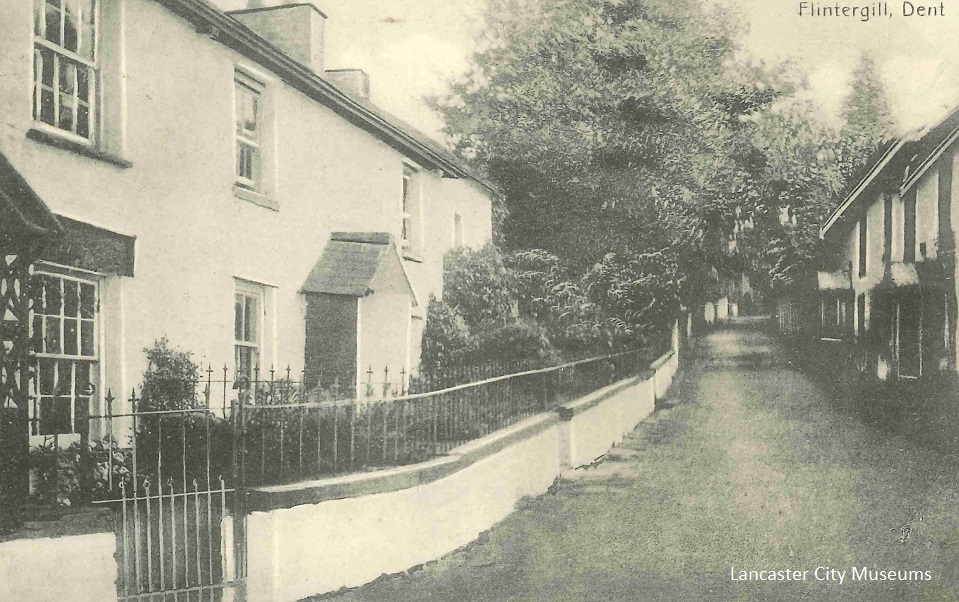Although Dent is not in the Lancaster district, it has historical connections along with Ingleborough and Burton-in-Lonsdale.
Dent was first recorded in 1202-8 as ‘Denet’. There are suggestions that it came from a Brittonic (Celtic) word ‘dind’ meaning ‘a hill’ (likely Ingleborough), but also that it might be an old British river name.
However, some have suggested that Dent may be named after a British leader called ‘Dunot’. This may be the King Dunod mentioned by the Welsh Annals in the late 500s.
In the mid-670s King Ecgfrith of Northumbria granted lands to St Wilfrid’s new minster at Ripon. They included the ‘regio Dunutinga’ – ‘the region of the people of Dent’ or ‘the region of the people of Dunot’.
Dent is thought to have been an important place in the ‘regio Dunutinga’. It has been suggested that the ‘regio’ covered the area of the old Ewcross Wapentake (or Hundred) that covered Sedbergh, Garsdale, Dent, Burton and Thornton-in-Lonsdale, Ingleton, Horton-in-Ribblesdale, Bentham, Clapham, Austwick and Lawkland. However some of these places came under the lordship of Whittington in the Domesday Book when, of course, Lancashire didn’t even exist!
Based on the remaining early Anglo-Saxon sculpture and church dedications to St Wilfrid, recent work by Felicity Clark has proposed that the religious sites in the Lune Valley were influenced, if not overseen, by Ripon.
Therefore it is possible that the ‘regio Dunutinga’ also included the Lune Valley, or it may have been one of the ‘other places’ mentioned in the grant at the time. Given what good farming land the Lune Valley was, it would seem unusual not to have referred to it directly. St Wilfrid would almost certainly have welcomed its addition to Ripon’s portfolio of properties.
The photo shows the road up by Flintergill at Dent. Flintergill was first mentioned in 1610.


